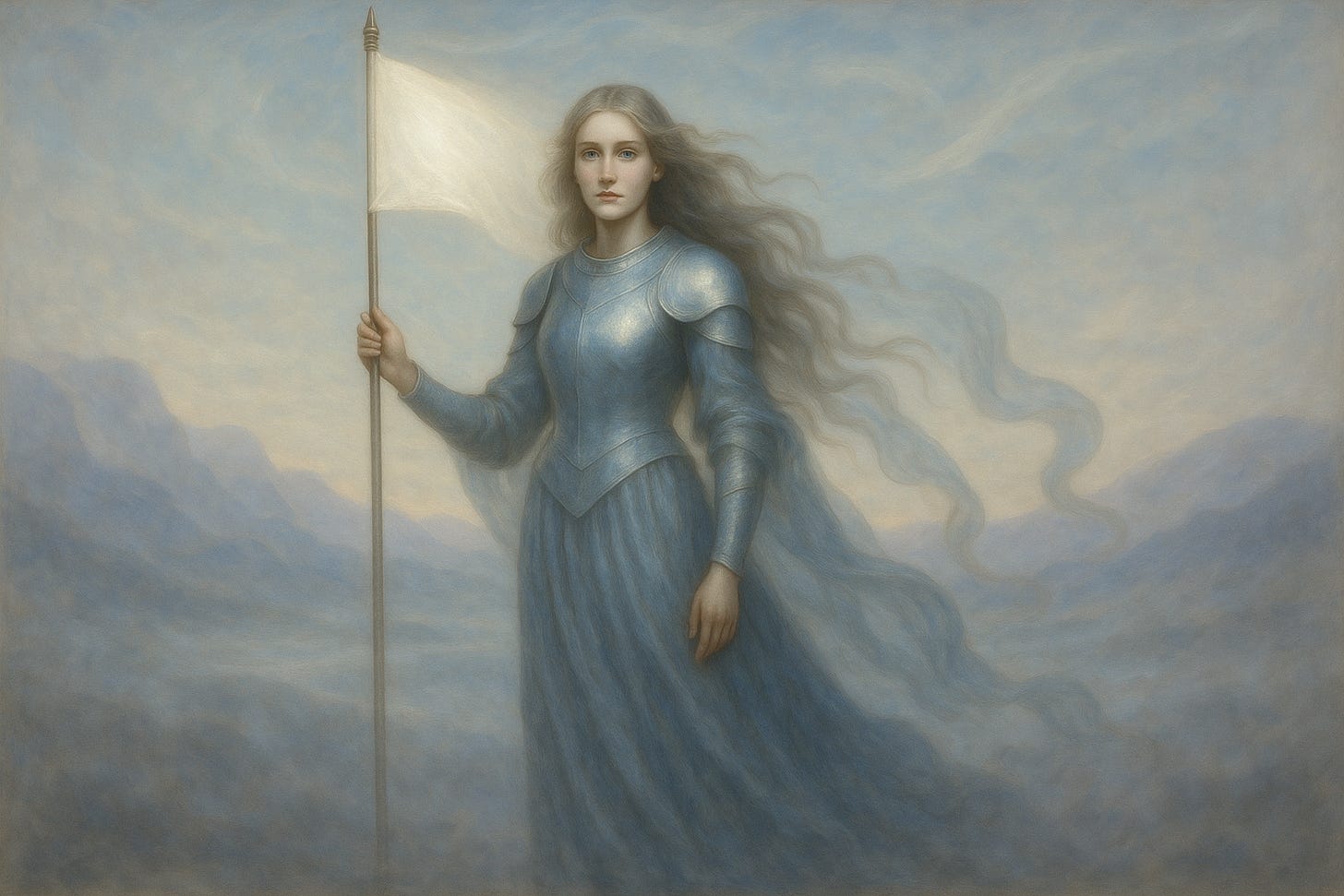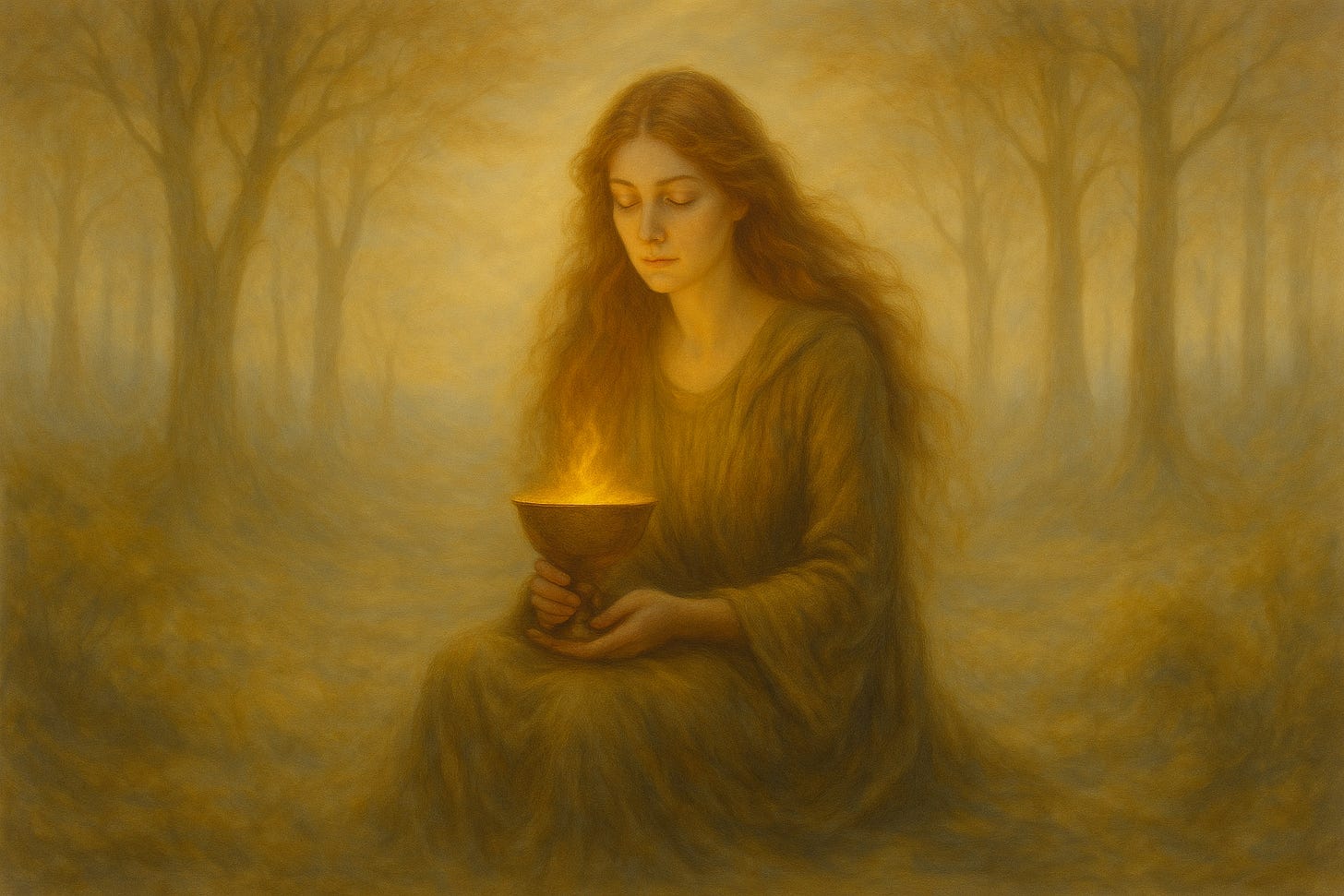Liminal Grace
The sanctification of creation
Across the Sky-Veil, one encounters mythopoetic expressions of how God disclosed His love to me and granted the grace by which I learned to love Him in return. That love did not arrive as abstraction or command, but as a call into His Kingdom—spoken through the converging presences of Caelia and Mirelda. He chose me as a broken vagabond, an exiled pilgrim, one who sought the Kingdom through a liminal landscape where the Being of creation shimmered near yet remained veiled—the Sky-Veil itself. My salvation by grace—attaining the Kingdom on the far side of the Veil—required the sanctification of that portion of creation entrusted to me alone, the ground where my own obedience would be learned.
“To human beings God even gives the power of freely sharing in his providence by entrusting them with the responsibility of ‘subduing’ the earth and having dominion over it. God thus enables men to be intelligent and free causes in order to complete the work of creation, to perfect its harmony for their own good and that of their neighbors.”—Catechism of the Catholic Church, paragraph 307.
“Let the sea be moved and the fullness thereof: the world and they that dwell therein. The rivers shall clap their hands, the mountains shall rejoice together at the presence of the Lord…” —Psalm 97:7–9. Douay-Rheims.
It was Caelia and Mirelda who awakened me to my mission through a mythopoetic unveiling of creation’s heralds—presences that shimmered throughout the Veil and drew harmony near to my Being. In the Sky-Veil through which I was called to pass, creation itself—moving seas, clapping rivers, rejoicing mountains—came alive as enchantment. This occurred through poetic remembrance: Aphrodite as the gleam of divine beauty and love, Athena as the flash of wisdom and courage, and Hera as the silent radiance of majesty.
Within the Sky-Veil, the Kingdom disclosed these three not as relics of pagan imagination but as hypostatic heralds—alethic emergences of what had long been hidden. They appeared not as distorted shadows cast by ancient temples, but as luminous signs within a world redeemed in Christ: a world alive with depth, height, and resonance. To the ancients they had been corrupted foreshadowings of the Incarnation; on my journey, they became enchanted lamp-posts in the dark night of faith, marking the narrow path across the Veil.
True enchantment revealed itself here: the transformation of what was best in the pagan world, not by rejection but by sanctification in Christ—through the unveiled meanings of divine beauty, wisdom, and majesty carried by Aphrodite, Athena, and Hera.
“For the expectation of the creature waiteth for the revelation of the sons of God. For the creature was made subject to vanity, not willingly, but by reason of him that made it subject, in hope: Because the creature also itself shall be delivered from the servitude of corruption, into the liberty of the glory of the children of God. For we know that every creature groaneth and travaileth in pain, even till now.” Romans 8:19–22. Douay-Rheims.
Once bound beneath the futility of a fallen cosmos, even the heralds groaned beneath veils of symbol and shadow. Yet through the Incarnation—and across the Sky-Veil—they were re-contextualized as harbingers of the divine, released into the liberty of the children of God. They appeared anew within the clearing of Beauty, Wisdom, and Majesty, rising like rosy dawn over dew-laden meadows. They no longer spoke as distant deities beyond the Veil, but through it—as shimmering signs. No longer idols, but indications; no longer sovereigns, but radiant echoes of a Word now made flesh.
This was the sanctified portion of creation the Sky-Veil unfolded for me: the nearness of Caelia and Mirelda, whose presences enclosed my own heart within the mystery of faith. Through them, the glints, shimmers, and flickers of the Kingdom’s Being were drawn near—heralded by Aphrodite, Athena, and Hera, and ordered toward Christ.
True enchantment lay in receiving the gleam and sparkle of the heralds’ beauty, wisdom, and majesty only as they bent toward the Christocentric ordination of the cosmos—allowing Christ to sanctify His creation from within. Such an ordering could take root only in a heart held between the silent banner of Caelia and the resting chalice of Mirelda—between flame and stillness, between call and repose.



